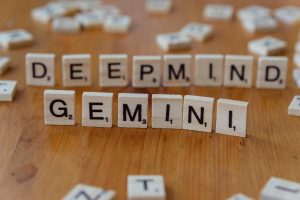Meta AI explained Trump’s One Big Beautiful Bill like it was running for office
Understanding the Recent Political Debates: Analyzing the Narrative Surrounding Trump’s “Big Beautiful Bill”
In recent political discourse, the term “Big Beautiful Bill” has garnered significant attention, often accompanied by contrasting perspectives from different sources. To shed light on this complex topic, let’s explore how major AI platforms interpret this legislation and what that reveals about its content and implications.
AI Perspectives on Trump’s “Big Beautiful Bill”
Meta AI’s Explanation:
Meta AI characterizes the bill as a comprehensive tax reform aimed at invigorating the U.S. economy. It highlights the extension of previous tax cuts, benefits for families and workers—such as increased take-home pay, child tax credits, and expanded health savings—and support for small businesses. Additionally, it emphasizes measures related to border security, infrastructure investments, and educational savings programs. Meta AI’s summary suggests a primarily pro-growth, pro-family narrative, focusing on individual and business benefits.
ChatGPT’s Summary:
In contrast, ChatGPT provides a broader overview that includes both the policy’s intended benefits and its contentious aspects. It details permanent tax cuts, expansions of certain deductions, and the creation of new savings accounts for children. However, it also discusses the bill’s substantial cuts to social safety net programs like Medicaid and SNAP, reductions in clean energy initiatives, and increased defense spending—outcomes that have raised concerns about their social and environmental impacts. Furthermore, ChatGPT underlines the bill’s role in increasing the national debt and its predominantly advantageous effect on high-income earners and corporations, rather than middle- or low-income communities.
Critical Reflection:
The divergence between these AI responses highlights how political and economic narratives can be portrayed differently depending on framing. Meta AI’s depiction leans toward emphasizing fiscal benefits and security measures, potentially echoing messaging that positions the bill as a historic boon. Conversely, the more nuanced view presented by ChatGPT underscores the potential trade-offs—particularly reductions in social programs and environmental investments—that have become points of debate among policymakers and the public.
Implications for Public Understanding:
This contrast underscores the importance for consumers of political information to seek multiple perspectives. While AI tools can assist in summarizing complex legislation, understanding the broader context—including possible social, economic, and environmental consequences—requires careful evaluation of varied sources and analyses.
Conclusion:
The discourse around President Trump’s “Big Beautiful Bill” exemplifies how legislative initiatives can be framed differently within political narratives. Whether emphasizing economic growth or highlighting social and environmental concerns, recognizing these differing viewpoints is crucial for informed civic engagement.














Post Comment